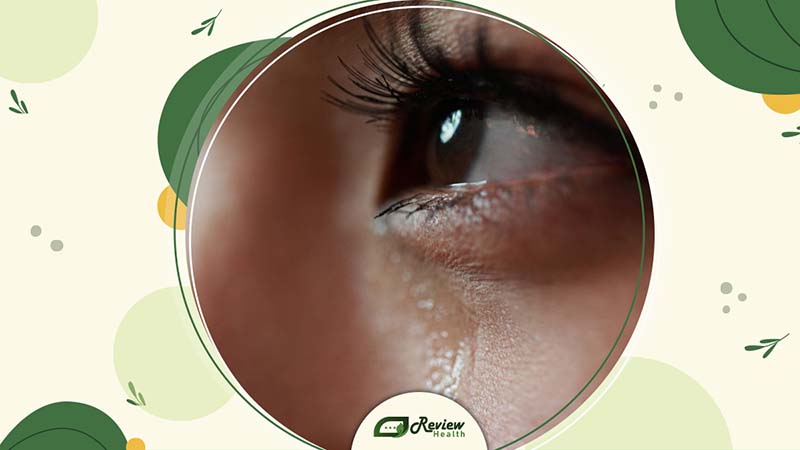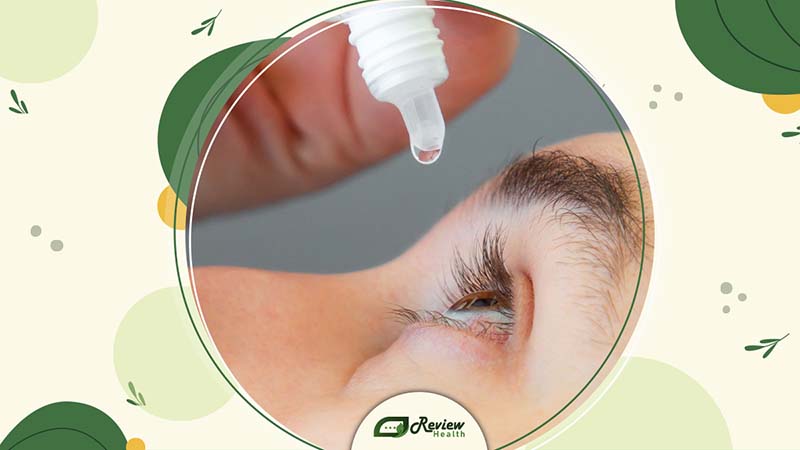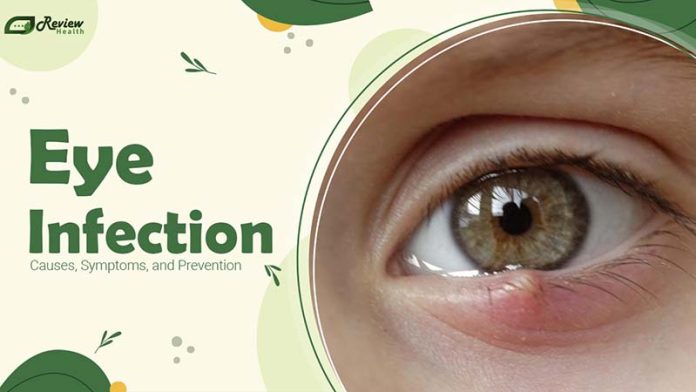Eye infections are just as important as our major organs, though they are often overlooked. On Review Health, we found that eye infections cause nearly a few million medical visits each year in the World. Luckily, most eye infections are treatable if caught early. It’s crucial to see a specialist if you think you have an eye infection. Knowing the causes can help you prevent future issues. Let’s explore how to keep your eyes healthy.
What Is an Eye Infection?
An eye infection occurs when microorganisms like bacteria, viruses, or fungi invade the eye, leading to a disease. The most common type of eye infection is pink eye, also known as conjunctivitis.
Pink eye is typically caused by viruses, although bacteria can also be responsible. It’s important to note that antibiotics are ineffective against viral infections; they only work against bacterial ones.

Eye infections can affect one eye or both, and while some are relatively minor, others can be serious and may even result in vision loss. These infections can target various parts of the eye, including the eyelid, conjunctiva, cornea, or external structures.
Causes of Eye Infections
Conjunctivitis, commonly known as pink eye, can be caused by various factors, including:
- Viruses
- Bacteria
- Allergens Other potential causes include:
- Exposure to chemicals
- Wearing contact lenses

- The presence of foreign bodies in the eye, such as loose eyelashes
- Indoor and outdoor air pollution, like smoke, dust, fumes, or chemical vapors

- Fungi
- Amoeba and parasites
Identifying the exact cause of conjunctivitis can be challenging because some symptoms may overlap regardless of the underlying cause.
Related articles:
- A Common Misdiagnosis: Confusing This Condition with Pink Eye
- How Long Does Eye Strain Last? Causes of Eye Strain
- Can Stress Cause Eye Problems? Here’s What You Need to Know & How to Protect Your Vision
Eye Infection Symptoms
When you have an eye infection, you may experience symptoms in one or both eyes. Look out for the following signs:
Sensations in your eye, such as:
- Pain or discomfort
- Itchiness
- Feeling like something is in your eye
- Increased sensitivity to light (light sensitivity)
- Burning sensation

- Presence of a small, painful lump under your eyelid or at the base of your eyelashes
- Tenderness in your eyelid upon touching
- Persistent tearing of the eyes

- Irritation
- Dry eye
- Blurry vision
Changes in the appearance of your eye, including:
- Discharge from one or both eyes, which may be yellow, green, or clear
- Pinkish hue in the whites of your eyes
- Swelling, redness, or purplish discoloration of the eyelids
- Crusty eyelashes and lids, particularly noticeable in the morning
Eye Infection Treatment
The treatment for an eye infection depends on its underlying cause. Here are some common approaches:
- Anti-infective Medication: This may come in the form of eye drops, ointments, or tablets, depending on the type and severity of the infection. Antibacterial medications typically take 24 to 48 hours to start working.

- Home Remedies: For viral or allergic infections, you may need to allow them to clear on their own. However, you can try these home remedies to alleviate discomfort:
- Applying damp, warm or cool compresses to soothe your eyes.
- Using lubricating eye drops (artificial tears) to relieve dryness.
- Taking over-the-counter (OTC) pain relievers if needed.
- Avoiding allergens that trigger the reaction.
It’s essential to consult with a healthcare professional for proper diagnosis and treatment, especially if symptoms persist or worsen. They can provide personalized guidance based on your specific situation.
Preventing Eye Infections
To help prevent eye infections or reduce the risk of recurrent viral infections, consider the following measures:
- Maintain Hand Hygiene: Avoid touching your eyes or face with unwashed hands, as this can introduce germs.
- Practice Good Hygiene: Bathe regularly and wash your hands frequently, especially before touching your eyes or face.
- Follow a Healthy Diet: Incorporate anti-inflammatory foods into your diet to support overall health, which may indirectly help prevent infections.
- Use Clean Materials: Use clean towels and tissues when caring for your eyes, and avoid sharing eye and face makeup with others.
- Keep Bedding Clean: Wash your bedsheets and pillowcases at least once a week to minimize the accumulation of bacteria and allergens.
- Proper Contact Lens Care: If you wear contact lenses, ensure they are well-fitted to your eye and regularly see your eye doctor for check-ups. Use contact solution to disinfect lenses daily.
- Avoid Contact with Infected Individuals: Refrain from touching or coming into close contact with anyone who has conjunctivitis or other contagious eye infections.
- Replace Contaminated Objects: Replace any objects that have come into contact with an infected eye to prevent the spread of infection.
By incorporating these practices into your daily routine, you can help safeguard your eye health and reduce the risk of developing eye infections.
Typical Eye Infections
After consulting with your doctor, they may diagnose the specific type of eye infection you have. Here are some typical eye infections and their characteristics:
- Pinkeye (Conjunctivitis): This infection affects the conjunctiva, giving the eyes a pink tint. It can be caused by bacteria, viruses, allergens, or irritants. Pinkeye is often associated with colds and is commonly viral in adults and bacterial in children.
- Keratitis: Characterized by inflammation of the cornea, keratitis can result from bacterial, viral, or parasitic infections, particularly in water. Contact lens wearers are at higher risk of developing keratitis.
- Stye: Styes manifest as painful red bumps under the eyelid or at the base of eyelashes. They occur when oil glands in the eyelid or eyelashes become infected with bacteria, resembling a pimple. Styes are not contagious.
- Fungal Eye Infections: While rare, fungal eye infections can be severe. They often occur following eye injuries, especially if the eye is scratched by plant matter like sticks or thorns. Improper contact lens hygiene can also lead to fungal infections.
- Uveitis: This inflammation affects the uvea, the middle layer of the eye. While certain viruses like herpes can cause uveitis, it is more commonly associated with autoimmune disorders such as rheumatoid arthritis or lupus.
Identifying the specific type of eye infection is crucial for determining the appropriate treatment and management plan. Consulting with a healthcare professional is essential for accurate diagnosis and personalized care.
How Common Are Eye Infections?
Eye infections are indeed quite common, affecting a significant number of individuals each year. In the United States alone, approximately 1 million people seek medical attention for eye infections annually. Notably, a considerable portion of these cases occurs among individuals who wear contact lenses.
The widespread occurrence of eye infections underscores the importance of proactive measures to prevent and manage these conditions. Maintaining proper eye hygiene, seeking timely medical care, and following recommended guidelines for contact lens use are essential steps in safeguarding eye health and reducing the risk of infection.
Conclusion
Eye infections are common and can result from various causes such as injury, viral infections, or prolonged contact lens wear. The good news is that most eye infections are treatable, especially when detected early. Seeking prompt medical attention from your eye doctor is crucial for managing and alleviating uncomfortable or painful symptoms.
By contacting your eye doctor at the first sign of an infection, you can expedite treatment and protect your eyes from potential complications, including vision loss. Remember, prioritizing your eye health and seeking timely care are key to maintaining optimal vision and overall well-being.
For more information on eye infections and tips on maintaining eye health, visit our website at Review Health. We’re here to help you stay informed and take the best care of your eyes.

